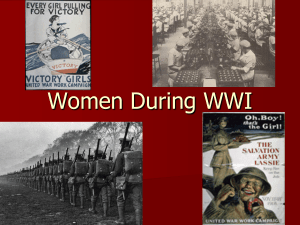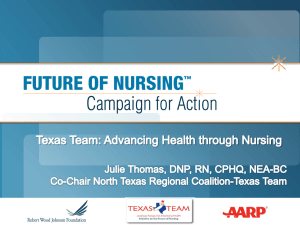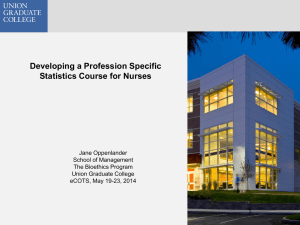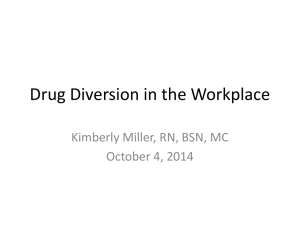File
advertisement
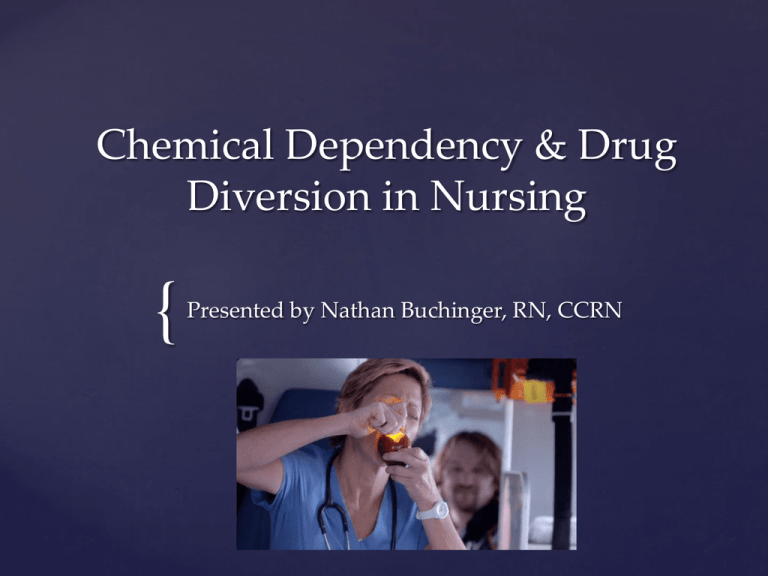
Chemical Dependency & Drug
Diversion in Nursing
{
Presented by Nathan Buchinger, RN, CCRN
Objectives
• To understand the prevalence of nurses who practice while
under the influence of drugs or alcohol
• To understand the importance of reporting suspicious behavior
• To examine the efficacy of punitive and non-punitive
approaches to chemically dependency in health care
• To examine theories and assumptions regarding nurses and
drug dependency
• To understand what current evidence-based research states
about this issue
Chemical Dependency
Definition:
: A physical or psychological habituation to a mood- or mind-altering drug,
such as alcohol or cocaine
*Chemical Dependency. (2007). The American Heritage Medical Dictionary. Retrieved from
http://medical-dictionary.thefreedictionary.com/chemical+dependency
Addiction noun \ə-ˈdik-shən, a-\
: compulsive need for and use of a habit-forming substance (as heroin,
nicotine, or alcohol) characterized by tolerance and by well-defined
physiological symptoms upon withdrawal; broadly : persistent compulsive
use of a substance known by the user to be harmful
*Addiction. (n.d.). Merriam-Webster’s online dictionary. Retrieved from http://www.merriamwebster.com/dictionary/addiction
Drug Diversion
Definition:
“The transfer of a prescription drug from a lawful to an unlawful
channel of distribution or use” (Inciardi, Surratt, Lugo, & Cicero,
2007, p. 2).
“Theft, forgery, or alteration of prescriptions by health care
workers” (Inciardi, Surratt, Lugo, & Cicero, 2007, p. 2).
Drug diversion is illegal!
Prevalence
Previous estimates: 1 in 5
nurses practice while impaired
(Griffith, 1999)
Most current estimate: About 1
in 10 (Dunn, 2005)
Rate of drug addiction in the
US: 1 in 10 (Dunn, 2005)
Relevance to Nursing
ANA Standards of Care
Standard 7: Ethics
“Delivers care in a manner that preserves and protects healthcare
consumer autonomy, dignity, rights, values and beliefs” (ANA, 2010, p.
47)
Standard 10: Quality of Practice
“Demonstrates quality by documenting the application of the nursing
process in a responsible, accountable, and ethical manner” (ANA,
2010, p. 52)
Standard 11: Communication
“Conveys information to … others in communication formats that
promote accuracy” (ANA, 2010, p. 54)
Standard 16: Environmental Health
“Promotes a practice environment that reduces environmental health
risks for workers and healthcare consumers” (ANA, 2010, p. 61)
Patient Rights
High Quality Patient Care
“[Nurses] first priority is to provide you the
care you need, when you need it, with skill,
compassion, and respect” (AHA, 2003, p. 2)
A Clean and Safe Environment
“[Nurses] use special procedures to avoid
mistakes in your care and keep you free from
abuse and neglect” (AHA, 2003, p. 3)
Root Cause Analysis
Problem Chemical Dependency
Causes:
Unmet needs
Threats to personal/social identity
Stress
Burnout
Socioeconomic factors
Comorbid physical/mental problems
Chronic Pain
Relevant Nursing Theories
• Erickson’s Modeling and Role Modeling Theory:
• “All people want to be the best that they can possibly be; unmet basic
needs interfere with holistic growth whereas satisfied needs promote
growth” (Erickson, Tomlin, & Swain, 2002, p. 56).
• “Object loss results in basic need deficits” (Erickson, Tomlin, & Swain,
2002, p. 88).
• Barker’s Tidal Model of Mental Health Recovery:
• “People who experience any of the myriad threats to their personal or
social identities, commonly called mental illness or mental health
problems, experience a human threat that renders them vulnerable”
(Barker, 2003, p. 6-7).
Theories of Drug Use
• Three Main Categories of Causation Theories:
• Biological: Innate physical mechanism
• Genetic
• Metabolic Imbalance
• Psychological: Compulsion & continued use
• Positive/Negative Reinforcement
• Pleasure seeking
• Inadequate Personality Theory
• Risk taking behaviorism
• Sociological: Individual within society
Commonly Abused Drugs
• Opioids
• Vicodin
• Percocet
• Oxycontin
• Morphine
• Methadone
• Fentanyl
• Codeine
• Dilaudid
• Demerol
• Barbiturates
• Amytal
• Phenobarbital
• Seconal
• Benzodiazepines
• Ativan
• Xanax
• Librium
• Valium
• Halcion
• Restoril
• Sleep Meds
• Ambien
• Sonata
• Lunesta
• Amphetamines
• Adderall
• Dexedrine
• Biphetamine
• Propofol
Signs of Impairment
• Attendance
• Excessive call-ins & tardies
• Frequent trips to the restroom
• Long or frequent breaks
• Early arrival or late departure
• Performance
• Assignments require more
effort/time
• Absentmindedness
• Carelessness
• Complaints regarding poor
care
• Behavior
• Poor hygiene
• Mood swings/irritability
• Poor recall
• Handling of Controlled Substances
• Frequent med errors
• Unwitnessed/Excessive wastes
• Frequents spills/drops
• Patient complaints of not
receiving documented meds
• Use of infrequent drugs
• Physical signs
• Tremors
• Nervousness
• Alcohol odor
• Slurred speech
• Unsteady gait
• Excessive use of breath mints
• Unusual fatigue
• Blackouts
Roles in Reporting
• Floor Nurses
• Know the signs
• Ethical duty to report
• Confront when patients are at
risk
• Go to manager right away
• Charge Nurses
• Same as floor nurses
• Do not ignore
• Do not lighten the assignment
• Do not accept excuses
• Nurse Managers
• Same as above
• Explain to nurse observations
made
• Listen to their side in private
• Report to next in chain of
command
• Document everything in writing
• Administrators
• Follow hospital protocol
• Perform investigation
• Gather all relevant data
• Meet with the impaired
nurse, Human Resources,
and nurse manager
• Apply corrective action
• Report to State Board of
Nursing
• Follow-up
Alternative-to-Discipline Programs
• Four Tenets of ATD Programs
• Assistance is better than discipline
• Self-regulation
• Swift removal of impaired nurses from
work place
• Workplace safety promotion
Reinstatement
Safety Recommendations
• Know the signs of
impairment
• Know who to report to &
what to report
• Truly witness wastes
• Know your role
• Only reinstate compliant,
rehabilitated nurses
• Random drug testing?
• QSEN Competencies
• Patient-centered care
• Teamwork and
collaboration
• Safety
• Quality
• Evidence-based
practice
For Further Study
“Good Medicine, Bad Behavior: Drug
Diversion in America”
http://www.goodmedicinebadbehavior.org/
explore/pain_management.html
References
• Earley, P. H., & Finver, T. (2013). Addiction to propofol: A study of 22 treatment
cases. Journal of Addiction Medicine, 7(3), 169-176.
doi:10.1097/ADM.0b013e3182872901
• Inciardi, J. A., Surratt, H. L., Lugo, Y., & Cicero, T. J. (2007). The diversion of
prescription opioid analgesics. Law Enforcement Executive Forum, 7(7), 1–14.
• Monroe, T., Pearson, F., & Kenaga, H. (2008). Procedures for handling cases of
substance abuse among nurses: A comparison of disciplinary and alternative
programs. Journal of Addictions Nursing, 19(3), 156-161. doi:
10.1080/10884600802306024
• Monroe, T., & Pearson, F. (2009). Treating nurses and student nurses with chemical
dependency: Revising policy in the United States for the 21st Century. International
Journal of Mental Health & Addiction, 7(4), 530-540. doi:10.1007/s11469-009-9208-2
• Monroe, T., & Kenaga, H. (2011). Don’t ask don’t tell: Substance abuse and
addiction among nurses. Journal of Clinical Nursing, 20(3-4), 504-509. doi:
10.1111/j.1365-2702.2010.03518.x
• Monroe, T. B., Kenaga, H., Dietrich, M. S., Carter, M. A., & Cowan, R. L. (2013).
The prevalence of employed nurses identified or enrolled in substance use
monitoring programs. Nursing Research, 62(1), 10-15. doi:
10.1097/NNR.0b013e31826ba3ca
• Wright, E. L., McGuiness, T., Moneyham, L. D., Schumacher, J. E., Zwerling, A., &
Stullenbarger, N. E. (2012). Opioid abuse among nurse anesthetists and
References (cont.)
• Alligood, M. R., & Tomey, A. M. (2010). Nursing theorists and their work
(7th ed.). Maryland Heights, MO: Mosby Elsevier.
• American Hospital Association. (2003). The patient care partnership:
Understanding expectations, rights and responsibilities [PDF
document]. Retrieved from http://www.aha.org/content/0010/pcp_english_030730.pdf
• Barker, P. J. (2003). Psychiatric and mental health nursing: The craft of caring.
London: Arnold.
• Erickson, H. C., Tomlin, E. M., & Swain, M. A. (2002). Modeling and rolemodeling: A theory and paradigm for nursing. Cedar Park, TX: Est. Co.
• Manchikanti, L., Fellows, B., Ailinani, H., & Pampati, V. (2010).
Therapeutic use, abuse, and nonmedical use of opioids: A ten-year
perspective. Pain Physician, 13(5), 401-435.
• Manchikanti, L., Helm, S., Fellows, B., Janata, J. W., Pampati, V., Grider, J.
S., & Boswell, M. V. (2012). Opioid epidemic in the United States. Pain
Physician, 15(3), ES 9-38.
• Quality and Safety Education for Nurses Institute. (n.d.). Competencies.
Retrieved from http://qsen.org/competencies/



